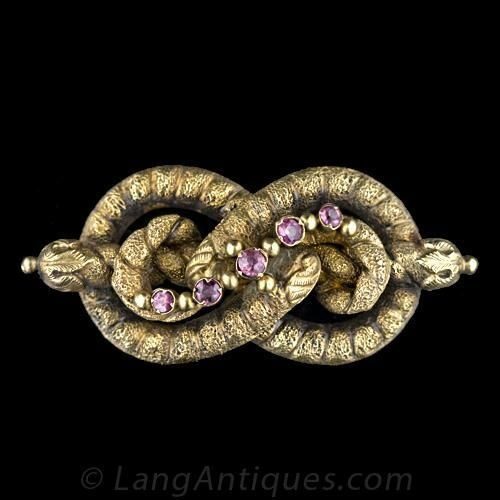
A lovers knot was used as a design for rings, chains and other motifs from Roman times. The knots themselves could be elaborate and tasseled or as simple as a “friars knot.” The lovers’ knot ring was often given as a wedding or engagement ring/betrothal ring, but could also be presented as a simple friendship ring. The design usually comprised a bezel consisting of a complex knot made from wire and could be embellished with gems or enamel. According to N.H. Nicolas: Privy Purse Expenses of King Henry the Eighth, 1827, lovers’ knots carried the symbolism ‘which naught but death shall loose.'1
The other most frequently used motifs were lover’ knots, padlocks, clasped hands, flaming torches, angels, cupids, cherubs, and wings. Wishbones symbolised the desire for wishes fulfilled, ribbons and bows secret love and guitars, lyres and mandolins harmony in love.
Animal motifs were also used in love jewellery, such as doves for purity, bees for industry, snakes for eternity and butterflies for the soul. A love bird with an envelope stood for a declaration of love. Moths fluttering around a diamond-topped candle were a warning of the dangers of passionate love. Salamanders (said to thrive in fire) symbolised passion in love and ducks, who were thought to mate for life, stood for marital fidelity.2
Sources
- Dawes, Ginny Redington with Collings, Olivia. Georgian Jewellery: 1714 – 1830: Woodbridge, Suffolk: Antique Collectors’ Club, 2007.
- Scarisbrick, Diana. Jewellery in Britain: 1066-1837. Wilby, Norwich: Michael Russell Ltd., 1994.